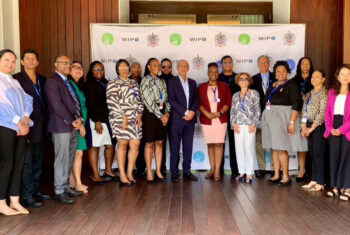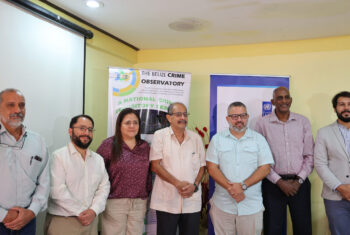Belmopan. August 23, 2021. 1:20 p.m.
On August 19, 2021, representatives from the Ministry of Infrastructure Development and Housing (MIDH) and the Maya Forest Corridor (MFC) Coalition visited specific sites along the Coastal Road currently under construction. The purpose of the visit was to assess and discuss the design of two culverts that traverse the MFC and will be utilized as wildlife underpasses.
The Maya Forest Corridor is Belize’s most important and most threatened wildlife corridor, as it connects the country’s two largest forest blocks: the Maya Mountain Massif in southern Belize and the greater Belize Maya Forest that includes Rio Bravo. The corridor provides connectivity for Belize’s National Protected Areas System and regional connectivity to the trinational Selva Maya. Measures that allow for safe road crossings are vital to the long-term survival of Belize’s wildlife that is a part of cultural heritage, nature-based tourism, sustenance, and livelihoods.
Present on the visit were Mr. Victor Espat, CEO of MIDH; Mr. Evondale Moody, engineering coordinator for the road project; the technical teams of Politecnica; the local contractor completing the works; and representatives of the Maya Forest Corridor Coalition: Dr. Kayla Hartwell and team from Foundation for Wildlife Conservation; Dr. Elma Kay of the Belize Maya Forest Trust; Mr. Celso Poot of The Belize Zoo; Ms. Emma Sanchez and team from Panthera; and Ms. Nicole Auil Gomez of the Wildlife Conservation Society.
The collaborative effort, put into motion following a meeting between Hon. Julius Espat, Minister of Infrastructure Development and Housing, and Dr. Elma Kay, recognizes the ministry’s commitment to balance development with biodiversity conservation and the proper management of Belize’s natural capital, and the MFC Coalition’s dedication to saving a critical area for wildlife. Moving forward, the MIDH and the MFC Coalition partners will collaborate on road signage and other measures to reduce wildlife mortality during road crossings as well as monitoring of wildlife crossings.
This collaboration is a first of its kind that will inform best practices for road construction projects that safeguard wildlife and connectivity of natural areas.
Ends


